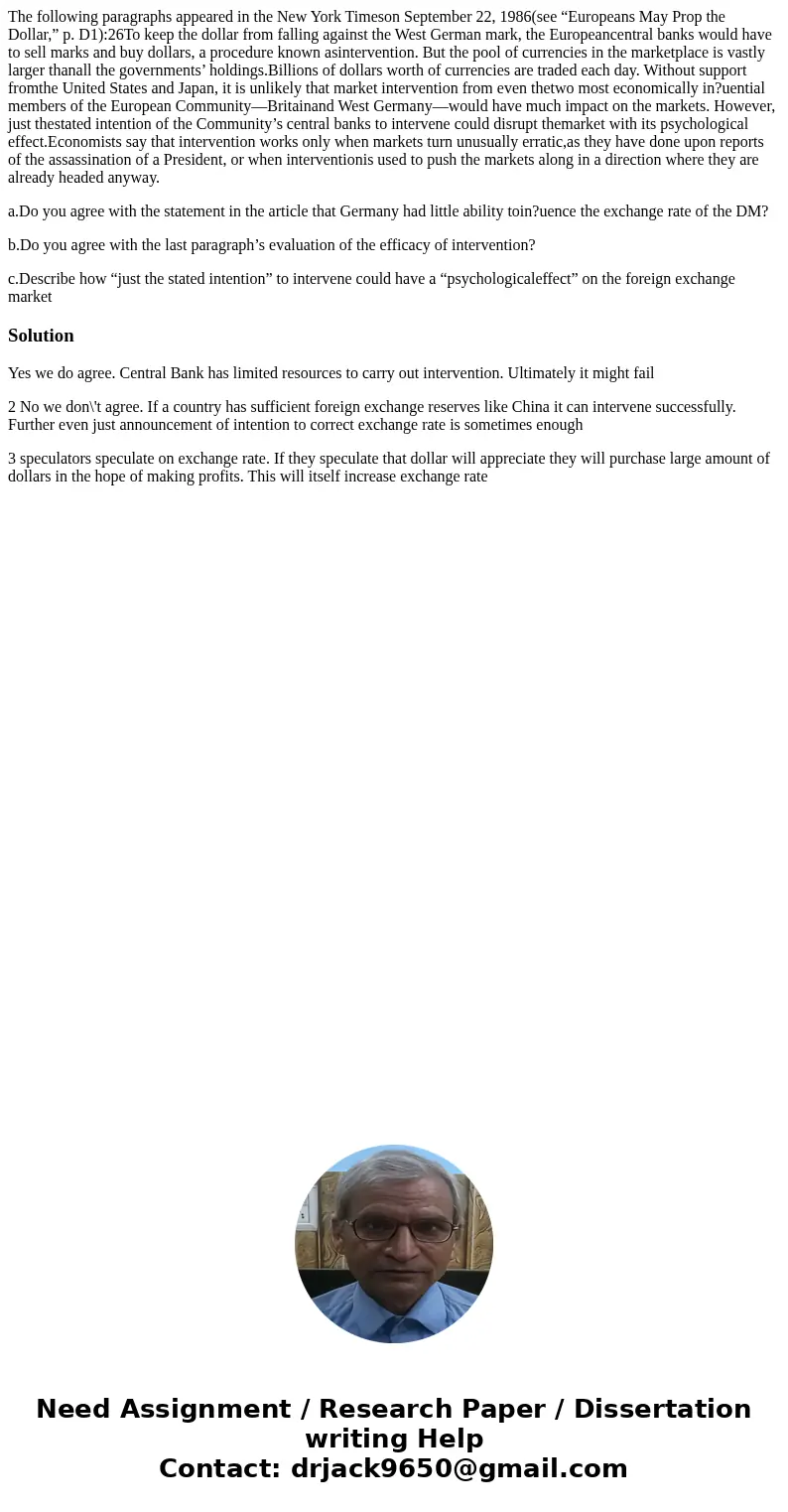The following paragraphs appeared in the New York Timeson Se
The following paragraphs appeared in the New York Timeson September 22, 1986(see “Europeans May Prop the Dollar,” p. D1):26To keep the dollar from falling against the West German mark, the Europeancentral banks would have to sell marks and buy dollars, a procedure known asintervention. But the pool of currencies in the marketplace is vastly larger thanall the governments’ holdings.Billions of dollars worth of currencies are traded each day. Without support fromthe United States and Japan, it is unlikely that market intervention from even thetwo most economically in?uential members of the European Community—Britainand West Germany—would have much impact on the markets. However, just thestated intention of the Community’s central banks to intervene could disrupt themarket with its psychological effect.Economists say that intervention works only when markets turn unusually erratic,as they have done upon reports of the assassination of a President, or when interventionis used to push the markets along in a direction where they are already headed anyway.
a.Do you agree with the statement in the article that Germany had little ability toin?uence the exchange rate of the DM?
b.Do you agree with the last paragraph’s evaluation of the efficacy of intervention?
c.Describe how “just the stated intention” to intervene could have a “psychologicaleffect” on the foreign exchange market
Solution
Yes we do agree. Central Bank has limited resources to carry out intervention. Ultimately it might fail
2 No we don\'t agree. If a country has sufficient foreign exchange reserves like China it can intervene successfully. Further even just announcement of intention to correct exchange rate is sometimes enough
3 speculators speculate on exchange rate. If they speculate that dollar will appreciate they will purchase large amount of dollars in the hope of making profits. This will itself increase exchange rate

 Homework Sourse
Homework Sourse